Monday morning in September. Feels like it could be one of the last glorious days of the year. It’s phytogram day. I’m not quite sure what I want to do but I found some black and white film the other day that’s been sitting in a drawer for so long it needs something random doing to it.
I’ve never made a phytogram before, I’ve made lumens aplenty and a gazillion other alternative and cameraless images. I don’t bother looking up ‘how to make a phytogram’ I just figure soda crystals and plant matter will do the job, mashed up with that late summer sunshine I mentioned.
Plants. I live in a very urban area of London, not far from Camden Lock Market. I love living there but to be fair it’s grim and dirty. I’m fascinated by the plants that don’t care about this. The plants that don’t care about heavy concrete slabs laid on top of the earth, the plants that don’t care about vomit or dog shit, the plants that will just as happily and powerfully grow alongside a half-sucked lolly or a cigarette end as they would in a plant pot or raised bed. They’re the cool guys, they’re the anarchists, the nature revoluntionaries who just don’t give a f***.
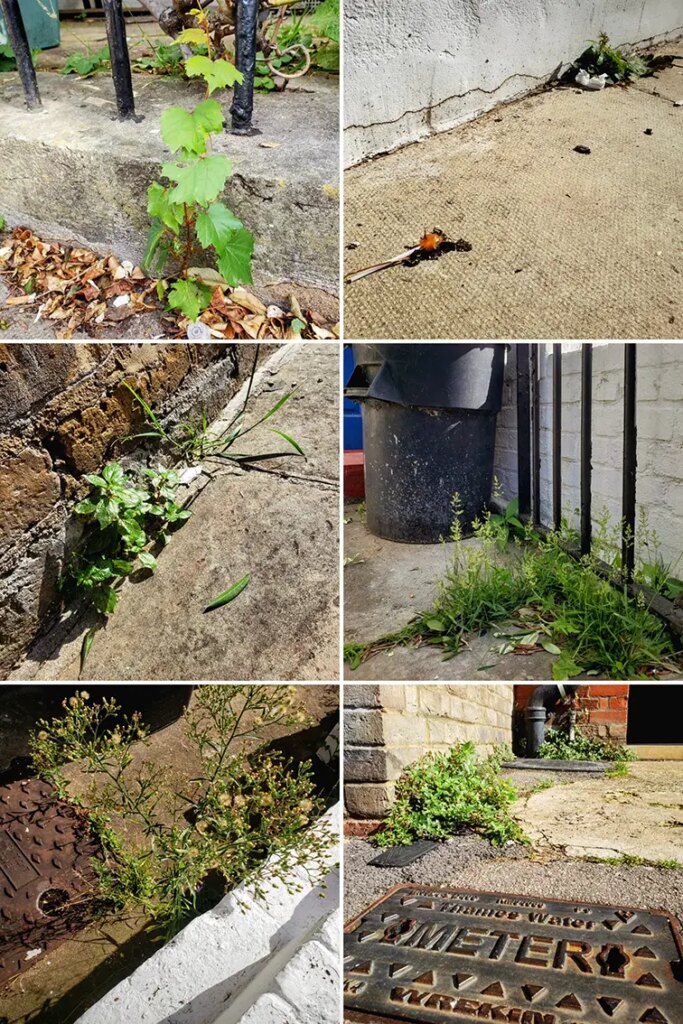
So there’s me, out on a Monday morning with my little basket, collecting the crappy little plants that are poking their way through the cracks in the paving stones, through the mortar in brick walls, peeping out from behind a BT box, unintentionally cohabiting with the trees that have been kind of trapped/’planted’ on London side-streets. You know, the bits where the dogs *really* like to poop.
So I get my plants back home. I’m not going to claim to be a botanist but I’m guessing dandelion? Alkanet? Annual Mercury? Chickweed? I don’t bother washing them but just give them a little soak in a garden bucket with a bit of £1 Dri-Pak soda crystals. I get my 2 films (Kodak Technical Pan 35mm and Kodak Plus-X 120) and pull them right out. This feels weird and innately wrong, even though there’s nothing on the film to screw up. I lay the film out on the ground and tape it in place to stop it curling right back up. I start laying the wet leaves directly onto the emulsion side of the film, not thinking too deeply about composition. I bung a few bits of old Perspex on top to stop things from blowing away.
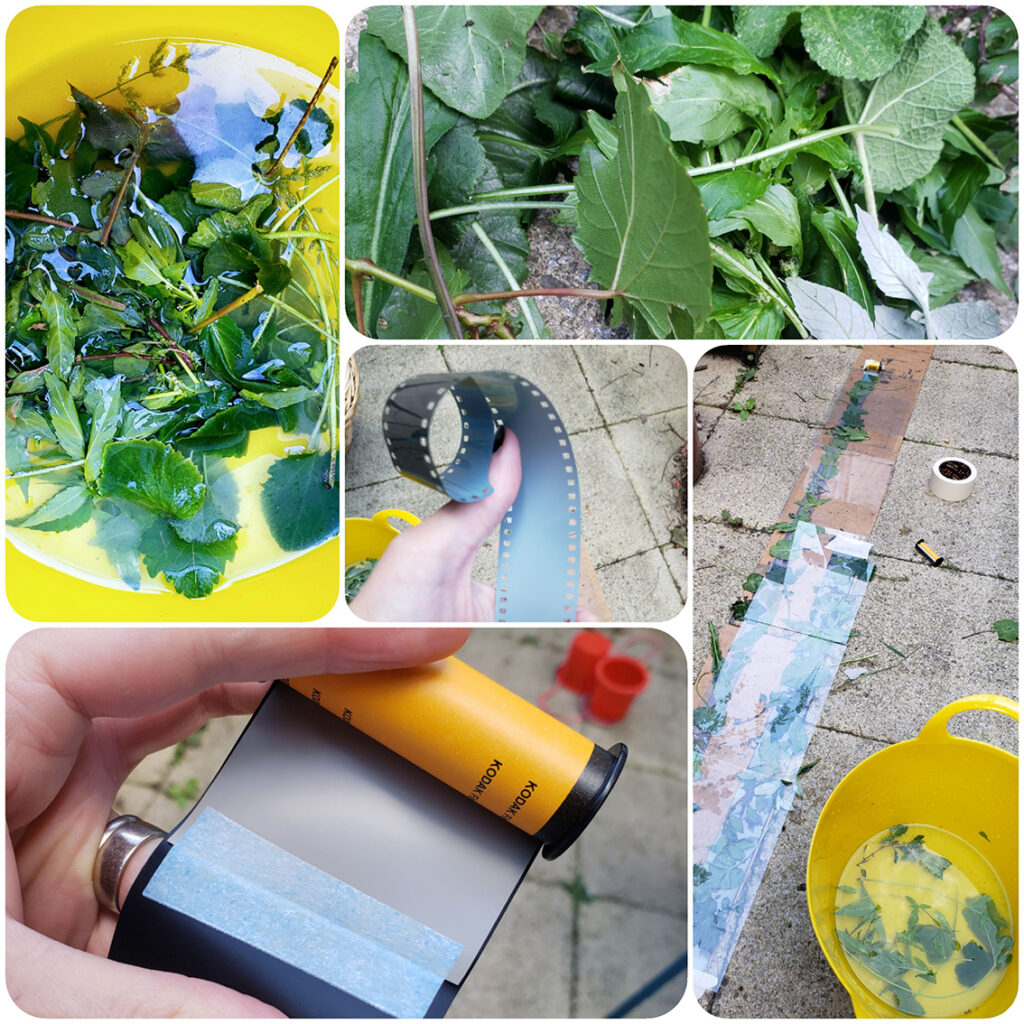
A few hours later I come back, remove the plants and quickly give the film a rinse in that garden bucket. I have some old, used fix in the shed that I’ve used before for lumen prints. It’s paper strength but I’m not going to worry too much about that. I drain the water, pour in the fix and put a piece of wood over the top to keep the light out a bit. I leave it all there, not sure how long but ‘a good long while’ coming back and checking on it every now and again to see if it looks like it’s cleared.
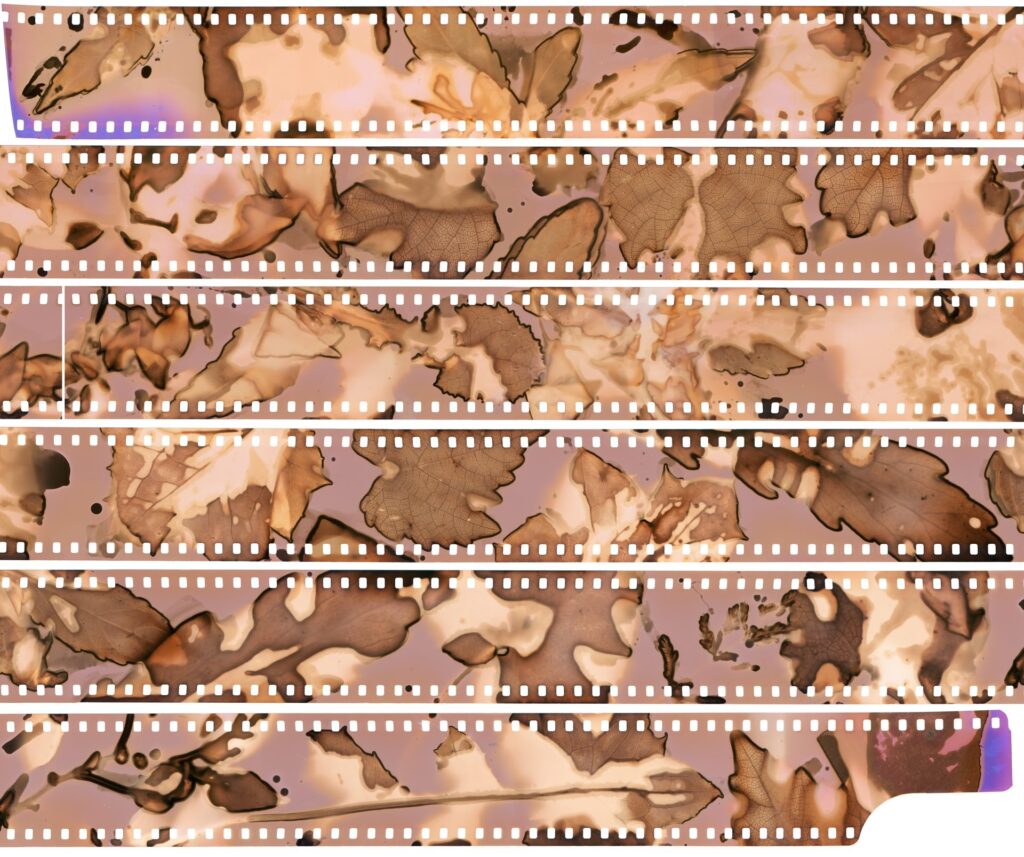
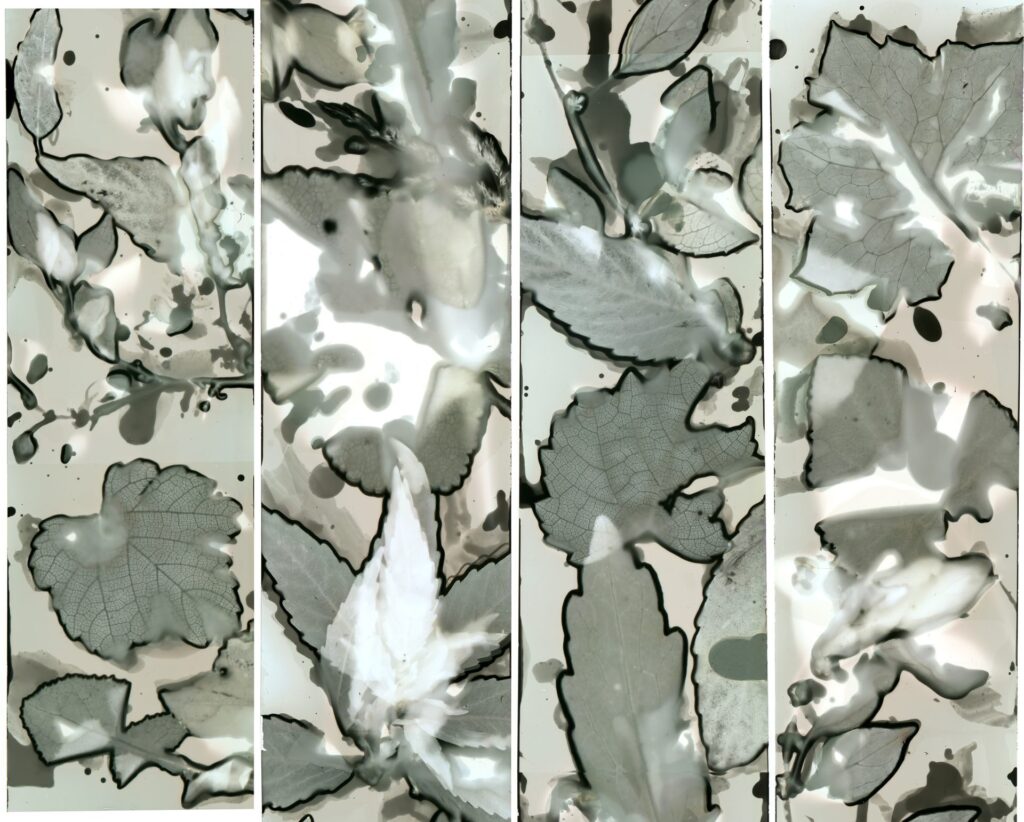
I go to scan the films to see what kind of marks the plants have made on the film’s surface. I don’t want to chop it up so I scan in sections and suddenly it occurs to me that could I kind of animate them, like when video film goes round and round on a video projector? I give it go, using a botch job of layers in Photoshop. By the way, apart from the animating process, no digital post-processing was used on these images, just a straight scan with a level on to get the right exposure and true colours.
First reaction on seeing the scans is I’m really pleased how they’ve come out. I’m struck by how different the colours and tones are on the two films, even though they’re both (Kodak) black & white from roughly the same era, both stored equally badlly.
I’m fascinated to see these beautiful dark marks outlining the leaf shapes – almost like someone has drawn around them with a thick Sharpie. The way the distinct veins on some leaves pull in and out of focus as the leaf writhes away from the film’s surface.
Rather than leaving the negatives to just sit in a sleeve or box I decide to see what nature can further do, so I bury the long curly ringlets of film in my garden. I figure I’ll dig them up in a while and re-scan them. Perhaps the soil will destroy the surface a bit, who knows what the moisture of autumn rain will do. Will worms or other bugs affect them?
Watch this space to see what I get. The rolls are currently being exhibited, still in soil, at RuptureXIBIT gallery in Hampton. Go and have a look if you like. I’ll scan them again when I get them back.
My approach to photography seems to have strayed very far away from what people might usually think of as photography – taking a picture with a camera. I use photographic materials but I’m interested in their surface, how can we affect it or partially destroy it? Most of all, I’m interested in the feeling I get from this. The unexpected, the flaws, the mistakes, the unknown while you wait for hours, days, weeks. I don’t want to ‘take pictures’.
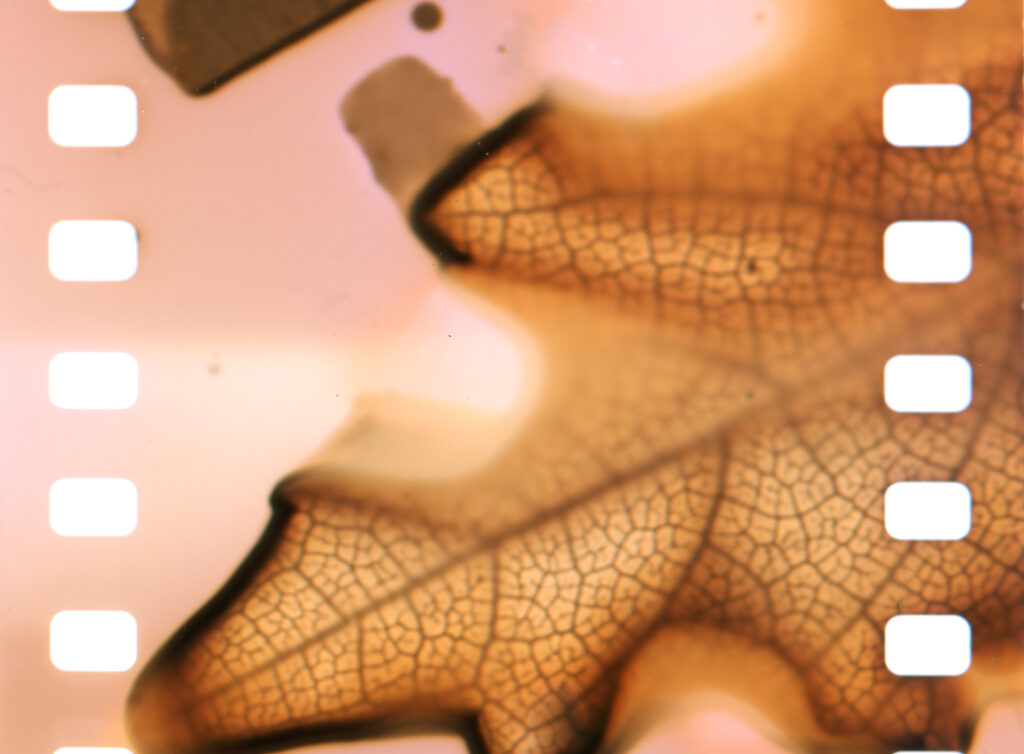
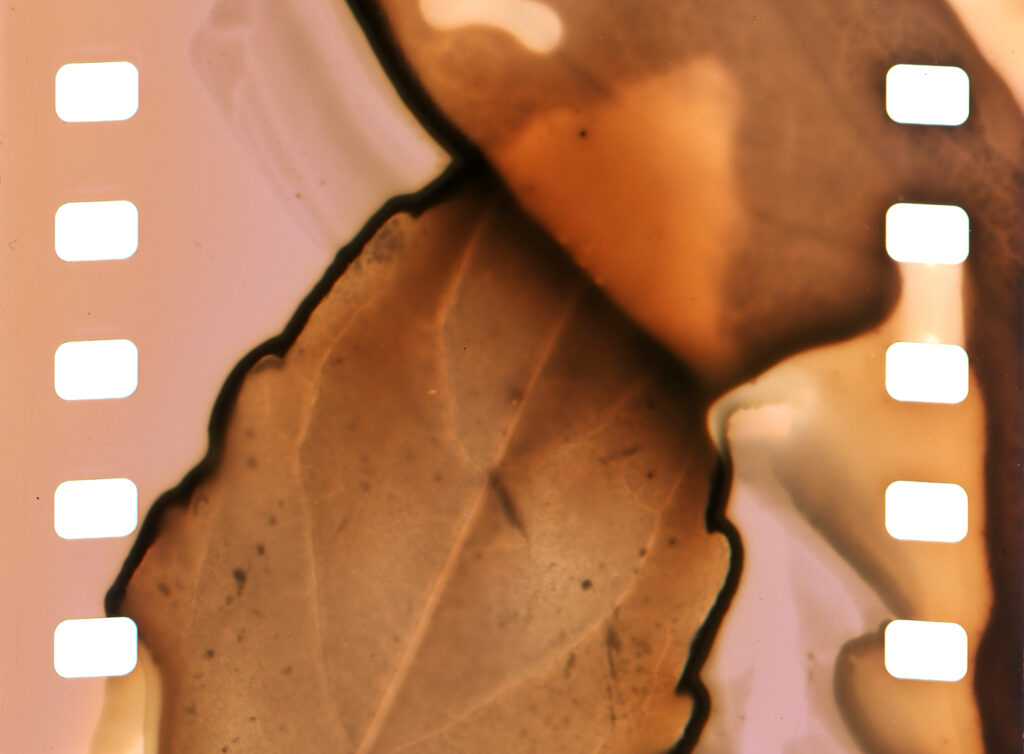
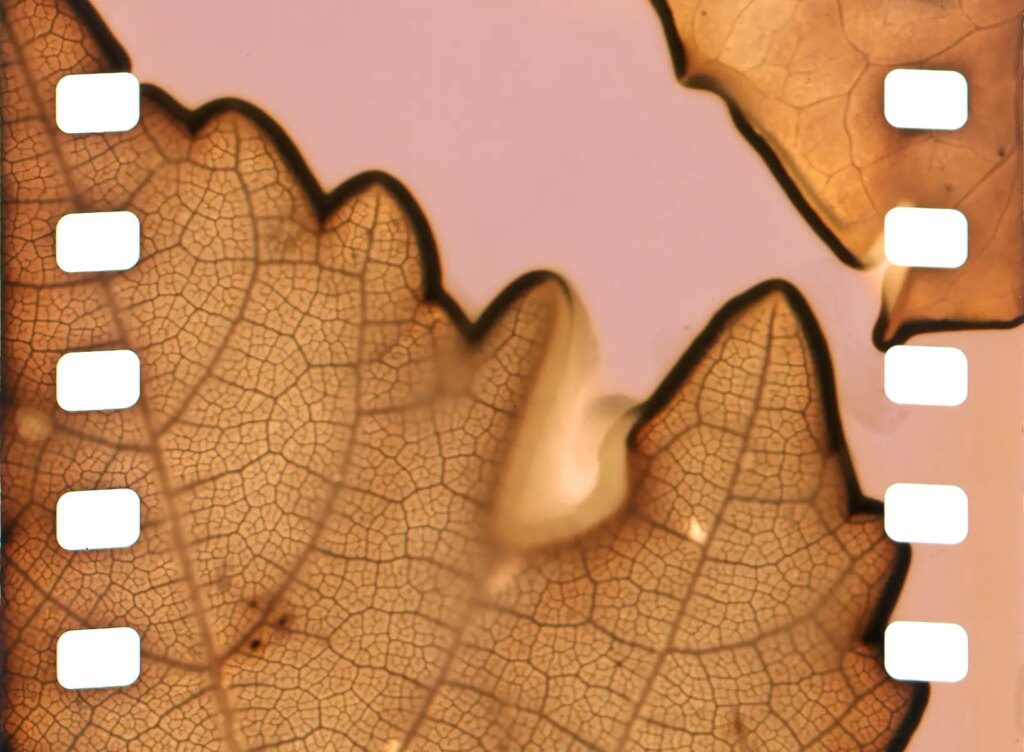
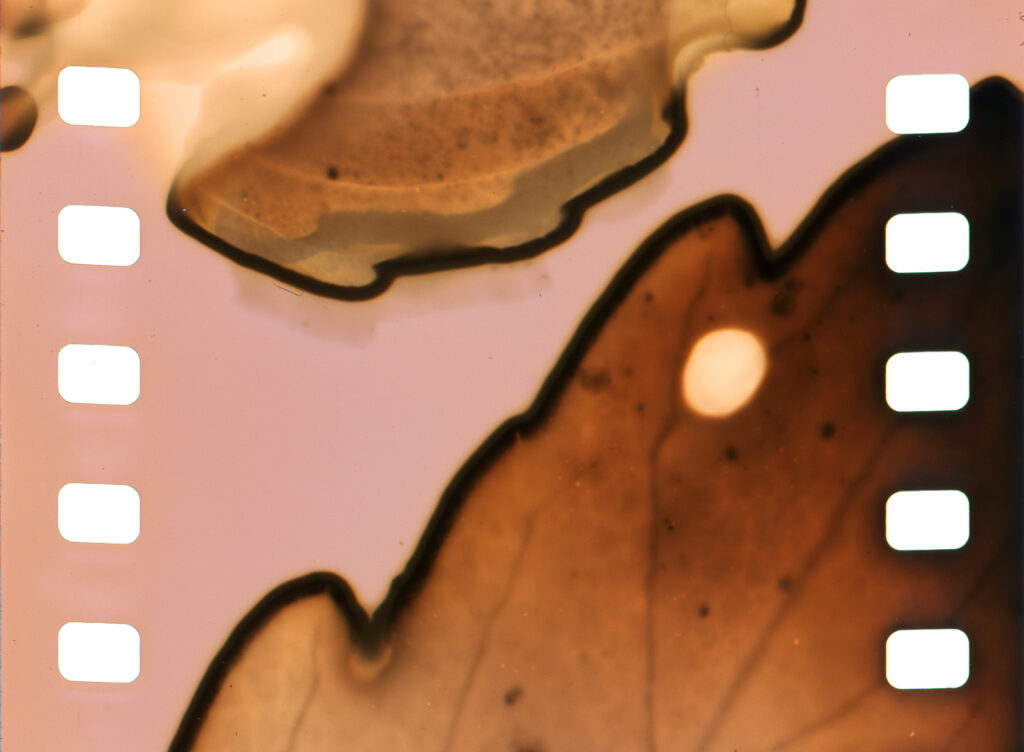
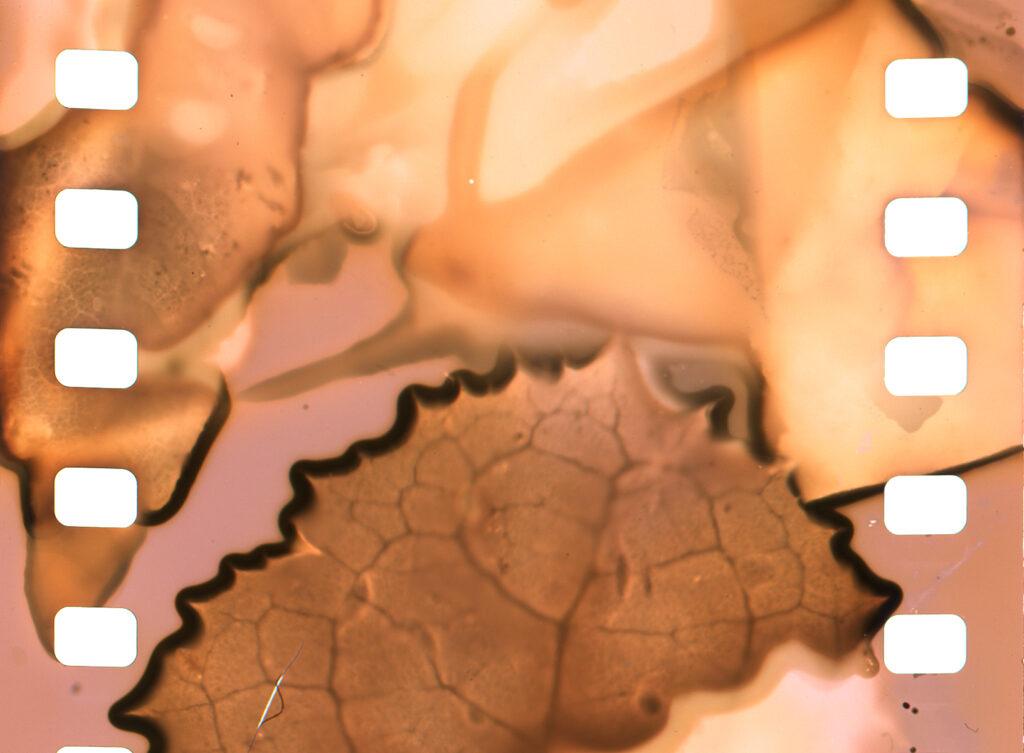
Catriona Gray is a photographic artist and educator from London working exclusively with alternative and cameraless photographic processes, including chemigram, Polaroid and roll film destruction, plant-based developers, cyanotype, anthotype, phytograms and liquid emulsion. She runs alternative process workshops at a wonderful darkroom in Camden, north London.
She believes in the power of flaws, mistakes and creative accidents – something lacking in the lives of many people – a physical process with a beginning, middle and end, no option to Command Z, no endless tweaking. Processes full of chances to ‘fail’, to feel surprised, disappointed or let down, to question your reaction to that, to let go of control a bit.
You can find her work on her website or instagram
Share this post:
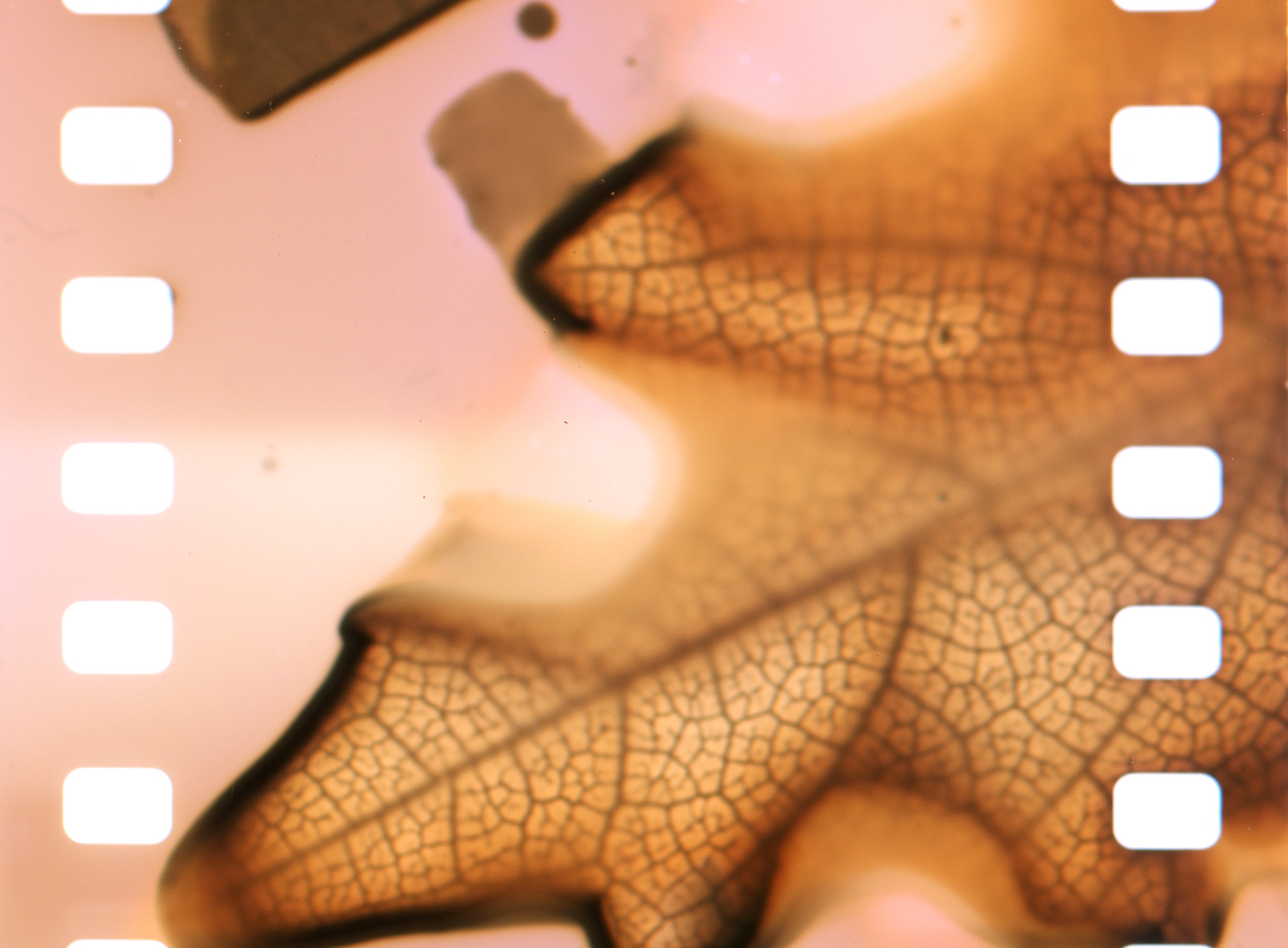
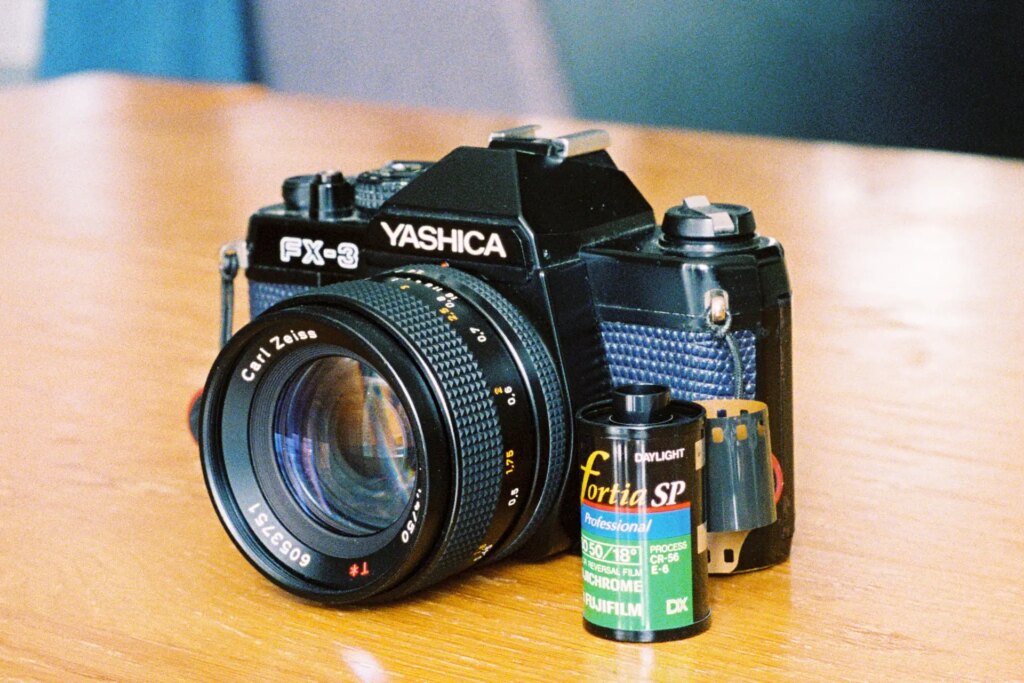
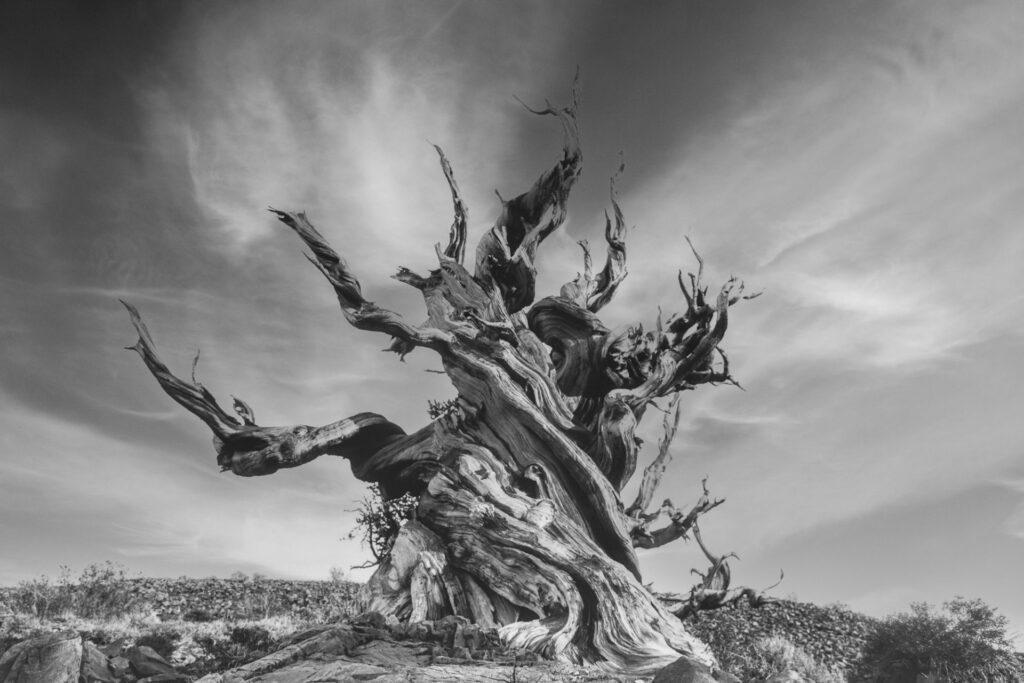
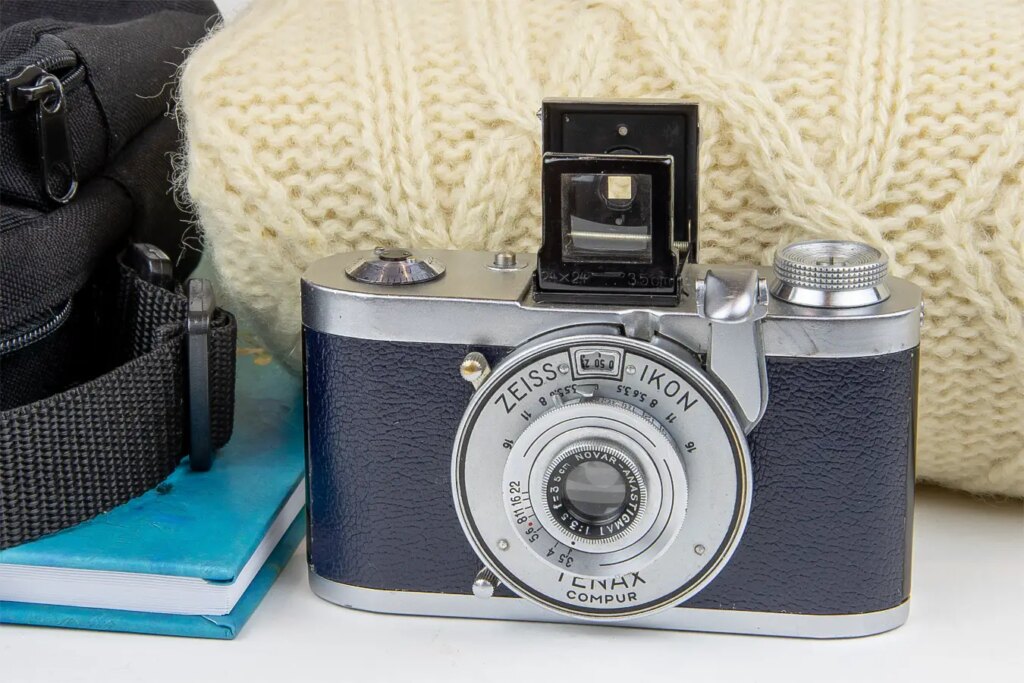
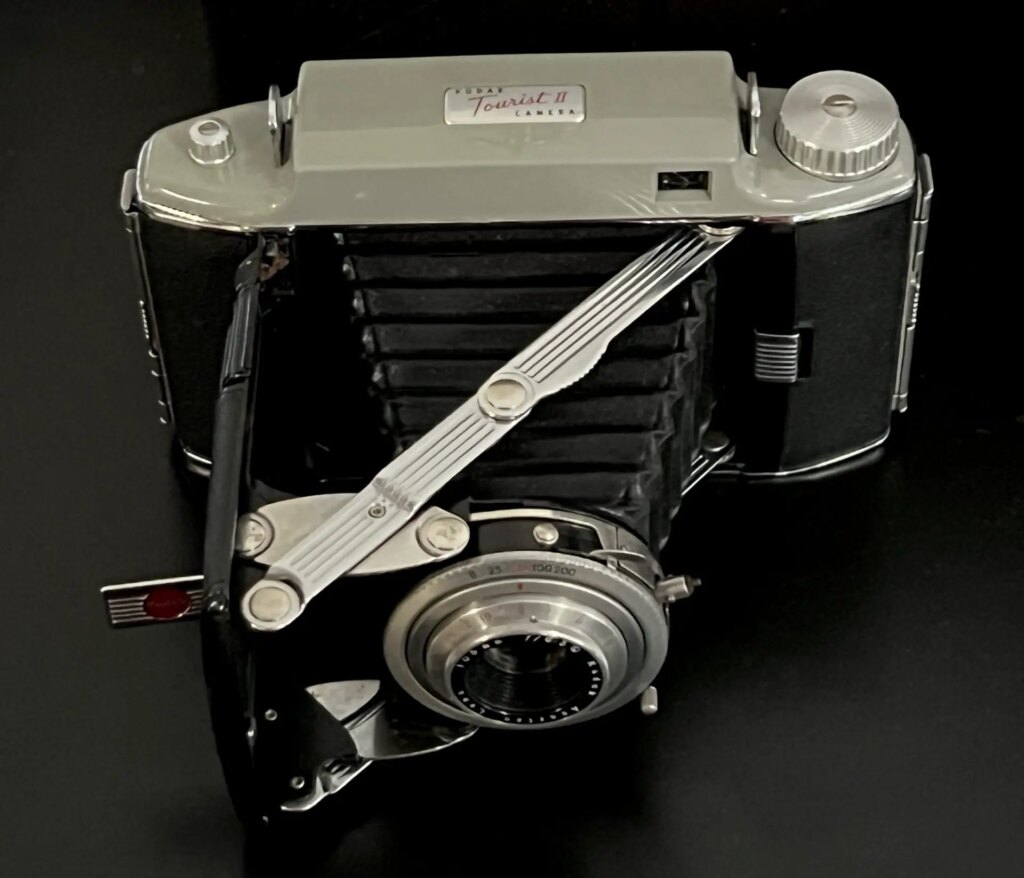




Comments
Geoff Chaplin on Phytogram Experiments in Weeds – What Pushes Through
Comment posted: 30/11/2023
Comment posted: 30/11/2023
Bob Janes on Phytogram Experiments in Weeds – What Pushes Through
Comment posted: 30/11/2023
If art is yo inspire and make you think, you have succeeded here with me...
Comment posted: 30/11/2023
David Hume on Phytogram Experiments in Weeds – What Pushes Through
Comment posted: 30/11/2023
Comment posted: 30/11/2023
John Furlong on Phytogram Experiments in Weeds – What Pushes Through
Comment posted: 02/12/2023
Regarding animation, it might be worth using a video editor to create a' slide show' and having a subtle dissolve setting between images. I tried this a few years ago to record an evening primrose opening in a 'faux timelapse' sequence - a full 36 exposure roll of outdated tranparency film taken a one minute intervals. Oxford Scientific Films and the BBCs Attenborough crew have nothing to worry about as regards competition, but I liked some of the results...
Cheers,
John F.
Uli Buechsenschuetz on Phytogram Experiments in Weeds – What Pushes Through
Comment posted: 02/12/2023